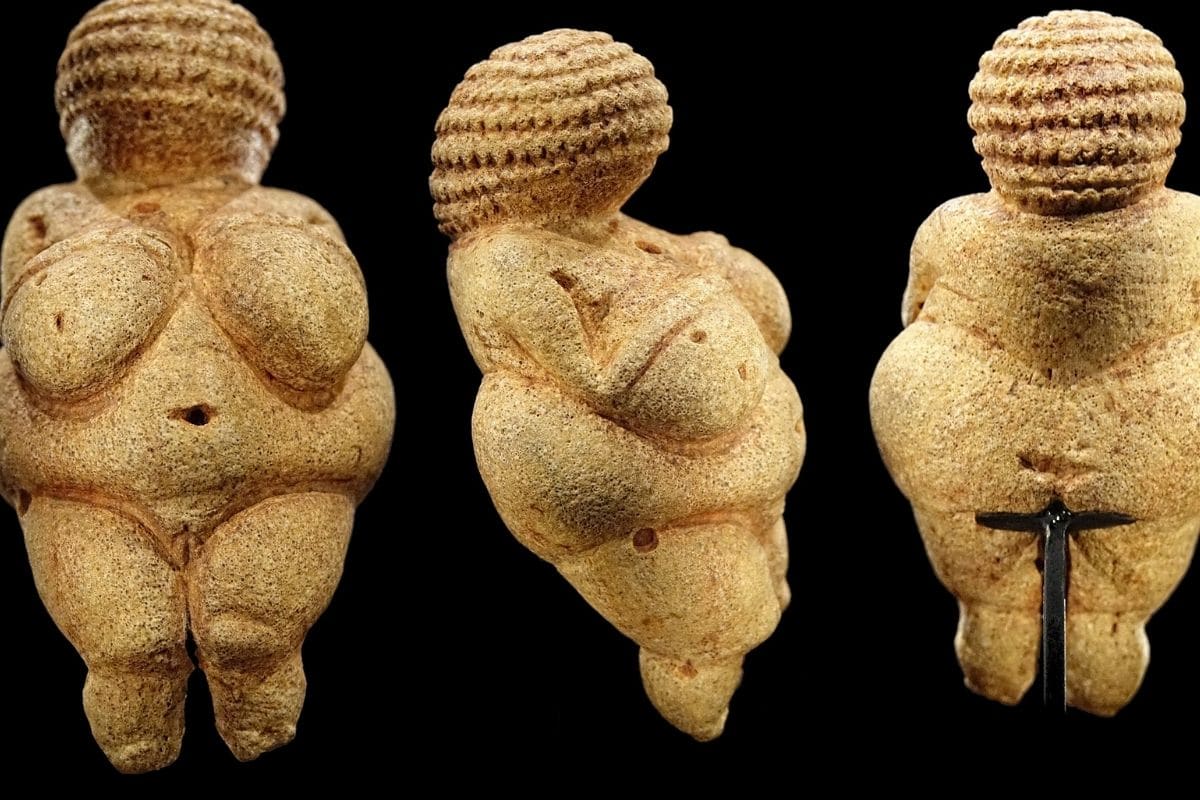
But above all, researchers think they finally know where the 30,000-year-old piece of art comes from.
It is less than 11 centimeters high, but invaluable. We are talking about the Venus of Willendorf: one of the most important examples of early art in Europe. The statue – which is about 30,000 years old – was found in 1908 in Willendorf, Austria, and has already been extensively studied from the outside. But for the first time, more than 100 years after the statuette was discovered, scientists have taken a look inside the little lady. And that leads to some interesting findings. For example, strong indications have been found that the statue – or at least the material from which it is made – originated in the north of Italy. In addition, the busty woman’s belly button seems to be a good accident.
Not uniform
It had previously been established that the Venus of Willendorf is made of a special material: oolitic limestone that cannot be found in the area where the Venus was found in 1908. It naturally immediately raised the question of where the statue – or the material it is made of – comes from. To answer that question, scientists decided to take a closer look at Venus. They naturally made use of modern techniques that would in no way damage the statue. The inside of the figurine was imaged in very high resolution using X-rays. And that immediately provided valuable information. “Venus is not uniform at all on the inside,” said researcher Gerhard Weber. “A special property that we can use to find out its origin.”
The structure of the oolitic limestone from which the Venus is made was then compared by the researchers with oolitic limestone from different parts of Europe. A time-consuming process that gradually paid off, however. After a thorough analysis, the researchers state that it is very likely that the figurine – or at least the oolitic limestone from which it is made – comes from the north of Italy, near the famous Lake Garda.
Long journey
And that is quite remarkable. Because the statue was found in Austria, so on the other side of the Alps. How it eventually got there is unclear. “People in the Gravettian – the culture of the time – searched for and lived in environments favorable to them,” says Weber. “When the climate or the situation around their prey changed, they moved, preferably along rivers.” In that sense, it does not seem inconceivable that the statue moved with it. But how they would have ended up on the other side of the Alps cannot be said with certainty. Perhaps they traveled around it. Another option is to pass through the Alps, but it is unclear whether this was possible 30,000 years ago – mainly in view of the colder climate and associated ice formation in the mountains.
The limestone of which the Venus of Willendorf is made bears the most resemblance to northern Italian limestone. That is why the researchers consider it very likely that the statue – or at least the material for it – comes from this region. However, there is one more contender. For example, the material could also come from Ukraine. Limestone from Ukraine does not resemble the limestone of the Venus of Willendorf as much as northern Italian limestone, but it is much more similar than any other studied limestone from the other European regions. What also cautiously argues for a Ukrainian origin is that similar – but much younger – Venus statues have been found in the near south of Russia in the past. In addition, genetic research shows that people in Central and Eastern Europe were already in contact with each other at that time – and it is therefore not inconceivable that a statue made in Ukraine managed to find its way to the area north of the Alps. However, that is all circumstantial evidence. The direct evidence of the statue’s origin still points more convincingly in the direction of northern Italy.
pits
Although the researchers set out to determine the provenance of the Venus figurine, the study yields another interesting finding. In this way, the scientists think they can explain why the statue is characterized by a few unexplained pits. These pits are all the same size and are located, for example, on the chest and right leg of the Venus of Willendorf.
Accidents
The investigation now reveals that the pits are all accidents. Limonites have been found in the interior of the Venus: fairly large, hard grains. These are – together with sediments and remains of shells – locked in the limestone. And those grains have exactly the same diameter as the pits on the outside of the Venus. The researchers therefore think that limonites that were originally on the outside of the limestone piece underlie these pits. “The hard limonites probably broke loose when the creator of the Venus carved the statue,” Weber said. It resulted in several pits, including the navel that was further enlarged by the maker. “In the case of Venus’ navel, he made a virtue of necessity,” Weber said.
The research thus provides quite a bit of new information about the Venus statue. But many questions also remain. For example, about the long journey that the statue – or the material from which it is made – must have made to eventually arrive in Austria. The statue itself may not be able to give us much extra information about this, but perhaps in the future discoveries will be made in the Alps and surroundings that will give us more insight into the period and culture in which the Venus of Willendorf was born.
Source material:
†Mystery solved about the origin of the 30,000-year-old Venus of Willendorf” – University of Vienna
Image at the top of this article: Bjorn Christian Torrissen (through Wikimedia Commons†